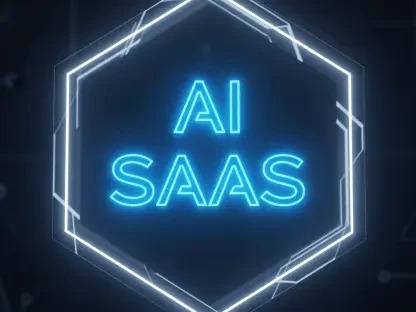In the midst of uncertain global economic trends, the cybersecurity sector has experienced an unprecedented influx of investment, reaching $9.4 billion in the first half of the year. This surge marks a peak not observed in recent years, with venture capitalists aggressively financing initiatives within both legacy firms and emerging startups. This analysis explores the pivotal role artificial intelligence (AI) plays in driving this investment wave, examining its impact on industry evolution and offering strategic insights for stakeholders.
Market Dynamics and the Investment Boom
The global investment landscape for cybersecurity has seen a remarkable uptick, with venture capital funding reaching levels not seen in three years. Insight into this trend reveals an upward trajectory from $4.5 billion in the first quarter to $4.9 billion in the second. This growth is fueled by significant funding rounds, with Cyera and Cato Networks standing out as prominent beneficiaries, raising $540 million and $359 million, respectively. Despite this influx, the market has also faced reduced merger and acquisition activity, following a vibrant first quarter featuring Google’s $32 billion purchase of Wiz.
Historical Context: Evolution of Cybersecurity and AI
Over the past decade, cybersecurity has transformed substantially, driven by rising cyber threats and the proliferation of digital technologies. One notable shift is the growing integration of AI solutions, which has bolstered the sector’s capacity to address prevailing security challenges. Recent high-value acquisitions, such as Google’s massive investment in Wiz, underscore the increasing strategic importance of AI. Understanding these developments highlights the historical footprint that shapes today’s investment tendencies and future directions in cybersecurity and AI.
Current Investment Trends and Influencers
AI: Propelling the Investment Surge
AI remains a cornerstone in catalyzing the growth of cybersecurity investments. This is evidenced by its central role in securing major funding rounds, generating interest despite ethical dilemmas and complex implementations. AI’s capacity to enhance defense strategies and threat identification makes it an attractive frontier for capital infusion. Experts consistently point out AI’s pivotal impact on security methodologies, navigating the balance between groundbreaking advancements and associated risks.
Growing Interest from Venture Capital
Venture capital enthusiasm toward cybersecurity has intensified, marked by substantial investments in up-and-coming companies. Innovative entities like Cato Networks are benefiting from this financial boom, propelling their capacity to reshape conventional security models. Comparative assessments show a shift in focus from traditional approaches to more modern, integrated solutions, presenting avenues for growth while cautioning against potential market saturation.
Geographic and Market-Specific Investment Patterns
Investment behaviors demonstrate notable regional variations, shaped by differing regulatory frameworks and innovation landscapes. Industry specialists provide insights into the diversified strategies employed—from North America’s robust scalability pursuits to Asia’s adaptable methodologies. Contrary to common misconceptions, these strategies are nuanced and influenced by socioeconomic and technological environments rather than homogeneous regional patterns.
Projected Innovations and Trends
Looking ahead, trends emphasize an intensified focus on AI integration in security frameworks, with potential transformations in technological paradigms and regulatory environments. These anticipated changes pose opportunities and challenges, necessitating agility among investors and companies alike. The upcoming technological shift is expected to zero in on autonomous systems and decentralized security management, positioning the industry for future advancements.
Strategic Recommendations and Practical Considerations
The analysis suggests that individuals and organizations must increasingly leverage insights powered by AI to fortify security measures. Emphasizing a forward-thinking stance on threat intelligence, companies are advised to actively engage with rising technological trends. Collaboration, targeted research and development, and adaptive security protocols are pivotal in maintaining a competitive edge.
Reflecting on these findings, it is clear that AI’s critical role and the enduring resilience of the cybersecurity sector are key themes. As the digital landscape becomes ever more complex, maintaining a dedicated focus on emerging cybersecurity breakthroughs is crucial for securing digital environments. Stakeholders are encouraged to embrace these transformative advances, fostering long-term growth and robust protection mechanisms—all crucial to navigating the future’s challenges.









